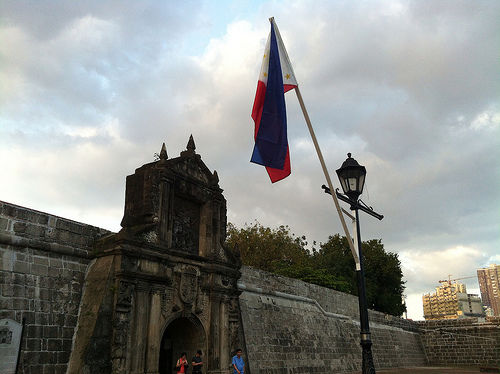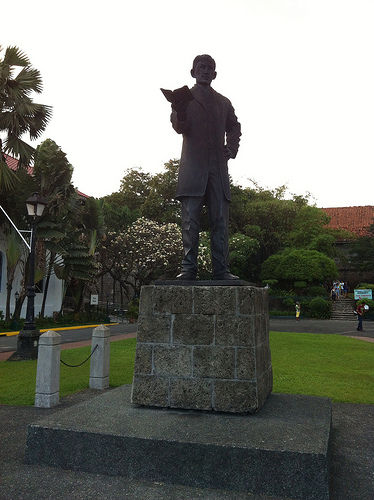






I started the New year 2014 by visiting one of the historic sites of Manila which is Intramuros. Together with my family on January 1, 2014 we explored the old Spanish streets and buildings that are mostly closed for the holiday. We sought out the two oldest churches: San Augustine and Manila Cathedral in the assumptions that they may be open for Catholic patrons to pray and tourists who want to witness the grandiose structure inside but we were sorry that they too were closed, but we couldn’t hide away from admiring the massive structure that are stoned art and heavily carved on its walls and pillars. So we moved on forward to the nearest tourist destination inside Intramuros which is Fort Santiago.
Fort Santiago is an important part of Philippine history because this was where our National Hero Dr. Jose Rizal was imprisoned during the Spanish colonial period before he was executed. Fort Santiago has also been used and captured by new colonizers, after Spaniards this was used by the Americans who made changes to the fort and then there came Japanese colonizers who used the prisons to imprison 600 Americans who died there of hunger and suffocation.
At this moment this historic site has been restored and maintained for viewing and educational purposes for tourists and students who wish to have a grasp of history of the place.
"Gwardia Sibil" as they call the guards in the old history is now being impersonated by the peace enforcer inside the Fort by replicating the uniform, hat and other paraphernalia on their body. You may see some of them near the gate and some are roaming around and you can approach them easily for some photo ops.
Near the gate of Fort Santiago is the Rajah Sulayman Theater, this was formerly a military barracks converted into as such for live act performances of PETA.
